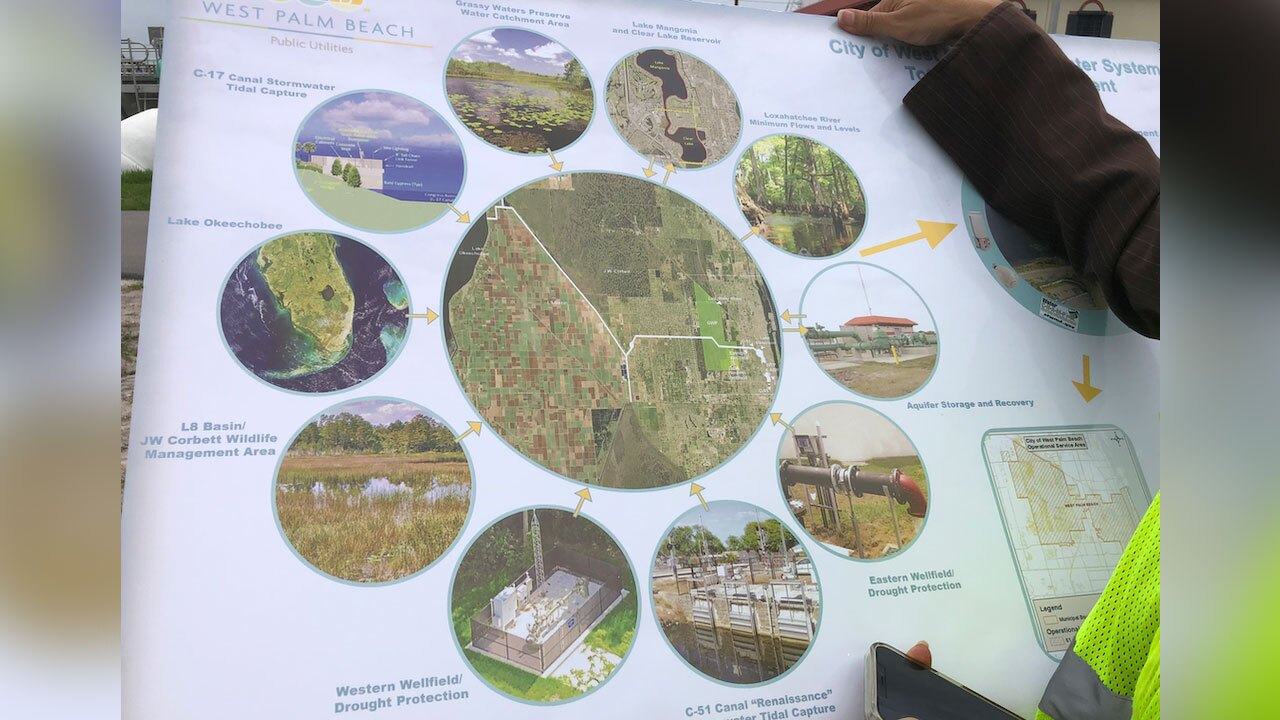WEST PALM BEACH, Fla. — In the wake of its water crisis, West Palm Beach utilities made several changes to keep its drinking water clean.
Contact 5 got a behind-the-scenes tour of the treatment plant to see its efforts to make tap water safer.
Public Utilities Director Dr. Poonam Kalkat said West Palm Beach's water treatment plant made changes to the blend of water coming in and the way water is treated once it gets to the plant.
These changes were made in mid-May after water tests found levels of blue-green algae toxins in tap water.

Those toxins were potentially dangerous to young children, the elderly and some medically vulnerable individuals.
"How do we know that this isn't going to happen again?" asked Contact 5 reporter Dave Bohman.
"So, we live in South Florida, and not just South Florida, we are seeing cyanotoxins and other toxins come up," Kalkat said.
The question is: what can we do to take it out, so the water is safe?
According to Kalkat, the answer is more testing of surface water at reservoirs, wetlands and canals before it reaches the plant.
A process in their holding tanks called powder-activated carbon filters out algae contaminants.

For a time, the plant upped the amount of chlorine to treat the water and implemented a new program at the testing lab called ELISA. It does not directly detect toxins, but it can pick up signs of trouble.
"It will give us just a little bit of a heads up as a screening tool," Kalkat said.
The plant's changes come after the state department of health warned the city faces fines for taking too long to tell health officials of the contaminants found in May.
Kalkat claims her agency followed the rules.
"For the state of Florida, this was the first time anyone was seeing that, so even state agencies didn't know how to follow it up and what to do," Kalkat said.
"I think both the federal government, namely the EPA, as well as the state could be doing more," said Jason Totoiu, a Florida-based attorney with the Center for Biological Diversity.

Totoiu said both state and federal environmental regulators need to require governments to warn the public quickly when they find even low levels of blue-green algae toxins.
"Things like standards just bring a greater accountability to government decision-makers, and we can from there, chart our progress," Totoiu said.
At the plant, Kalkat sees progress in the recent changes made to the way the utility monitors and treats drinking water.
"How confident are you that if toxins were found in the water today that you'd have a quicker diagnosis than you did three or four months ago?" Bohman asked.
"Very confident," Kalkat said.
Kalkat said more changes could be ahead when a panel of experts is scheduled to meet soon to review the utility's operation.
That panel could meet as early as this week.



